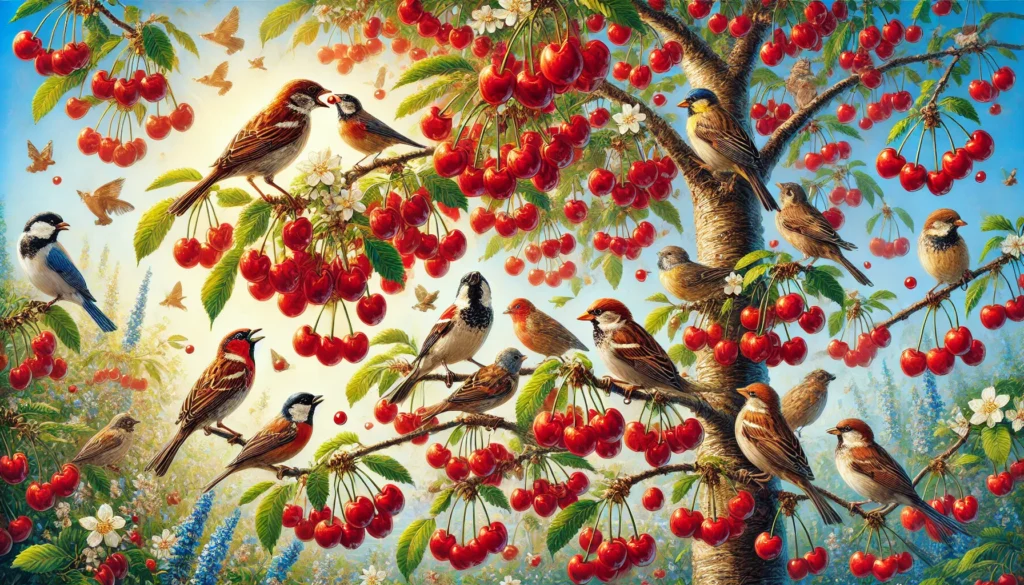
How to Keep Birds Away from Your Cherry Tree Without Harm: Effective and Safe Solutions
If you’ve ever found your cherry tree stripped of its ripe fruit by hungry birds, you know how frustrating it can be. But what if you could keep birds away from your cherry tree without causing them harm? In this article, we’ll explore effective and humane methods for protecting your tree while ensuring the birds remain safe. By learning how to keep birds away from your cherry tree without harm, you can enjoy a bountiful harvest while maintaining a harmonious balance with nature. Let’s dive into some safe and practical solutions that will help you safeguard your tree and its fruit!
Table of Contents
ToggleWhy Birds Love Cherry Trees: Understanding the Attraction
Cherry trees are a bird’s paradise — and it’s not just because of the sweet, juicy fruit!
Here’s why birds flock to cherry trees:
- Delicious Fruit Supply
Birds absolutely love cherries. The bright red color and sugary juice attract them like magnets. It’s a natural, easy food source! - Dense Foliage for Shelter
The thick canopy provides excellent cover from predators and harsh weather. Birds feel safe nesting in cherry trees. - Ideal Nesting Spots
Cherry trees offer strong branches and cozy crooks, perfect for building nests. Early spring blooms also attract insects — great for feeding chicks! - Insect Buffet
Birds feed on the insects that live on cherry trees too. Aphids, caterpillars, and beetles make tasty snacks! - Seasonal Appeal
In spring, cherry blossoms draw pollinators. Birds love the action and find plenty to eat. In summer, it’s cherry time. In fall, seeds and insects linger.
By planting a cherry tree, you’re not just adding beauty — you’re creating a bird haven!
Humane Ways to Keep Birds Away: Effective and Safe Methods
Protecting your garden or home from birds doesn’t mean harming them. Here are safe and effective methods to keep birds away—without causing stress to our feathered friends!
- Use Reflective Objects
Hang shiny items like CDs, aluminum foil strips, or reflective tape. The light reflections confuse birds and scare them away. - Install Bird Spikes (Harmless!)
Place plastic bird spikes on ledges or fences. They don’t hurt birds—they just stop them from landing. - Use Garden Pinwheels or Moving Objects
Birds dislike constant motion. Pinwheels, windsocks, or moving garden decorations are simple and bird-safe deterrents. - Try Sound Deterrents
Devices that emit predator calls or distress signals can keep birds at bay. Use them sparingly so birds don’t get used to them.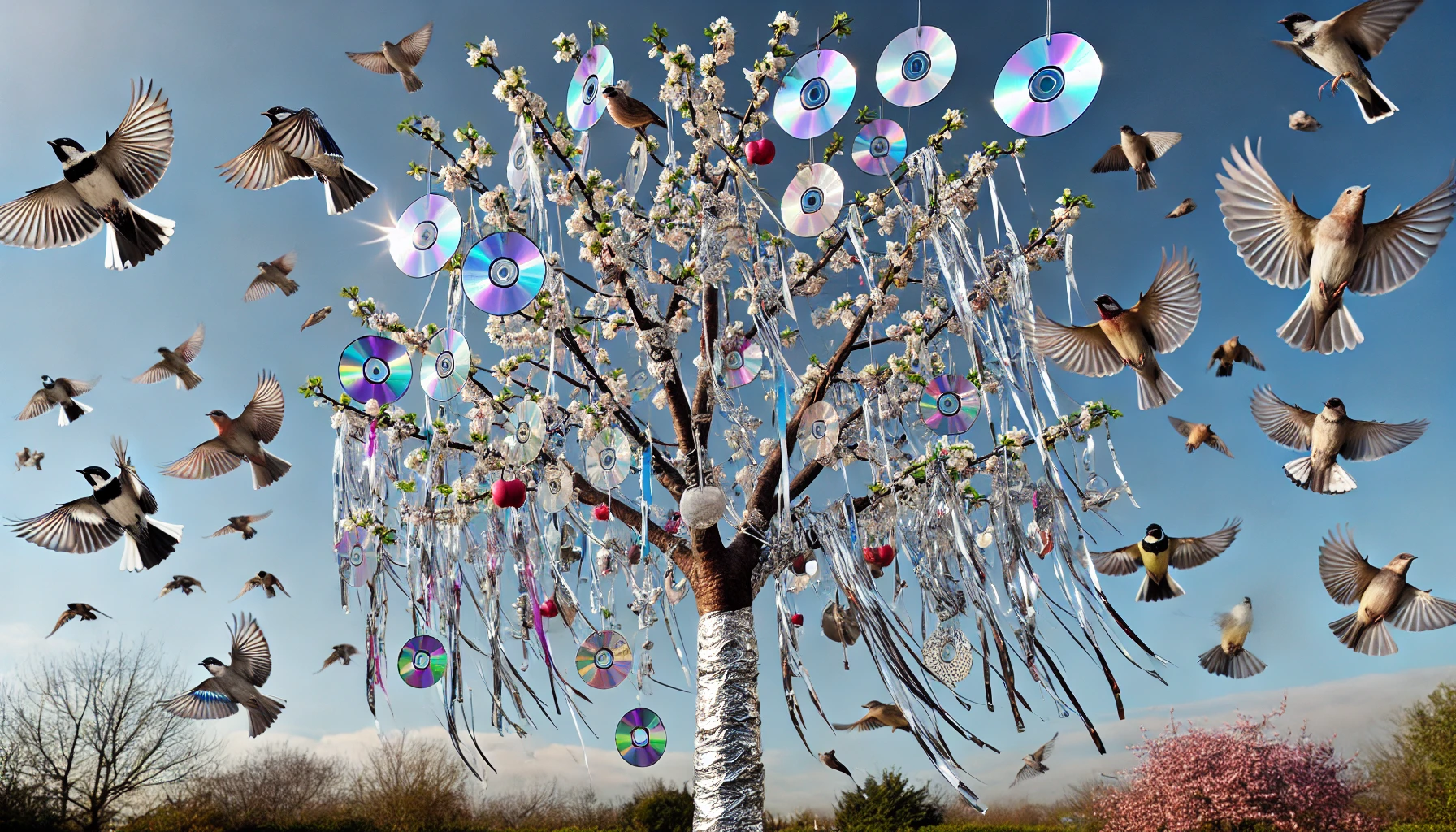
- Place Predator Decoys
Owls, hawks, or rubber snakes can make birds think danger is near. Move them every few days to stay effective. - Netting or Mesh Covers
Use bird-safe netting over fruit trees, vegetables, or ponds. It blocks access without harming them. - Scent Deterrents
Some birds dislike strong smells. Hang citrus peels or use natural oils like peppermint or garlic around the area. - Offer Alternatives
Set up a bird feeder far from your garden. Birds will be more likely to feed there than in your plants.
By using these humane methods, you can create a bird-free zone while still respecting nature.
Alternative Methods to Distract Birds: Giving Them Other Options
Sometimes the best way to keep birds away from your crops or garden is to simply give them a better alternative. Here are smart, humane ways to redirect their attention:
Plant a Decoy Garden
Set up a separate area with bird-friendly plants like sunflowers, millet, or berries. These attract birds away from your main garden and keep them happy.
Offer Bird Feeders
Place feeders filled with seeds they love—like black oil sunflower or millet—far from your crops. It’s a win-win: birds get fed, and your plants stay safe!
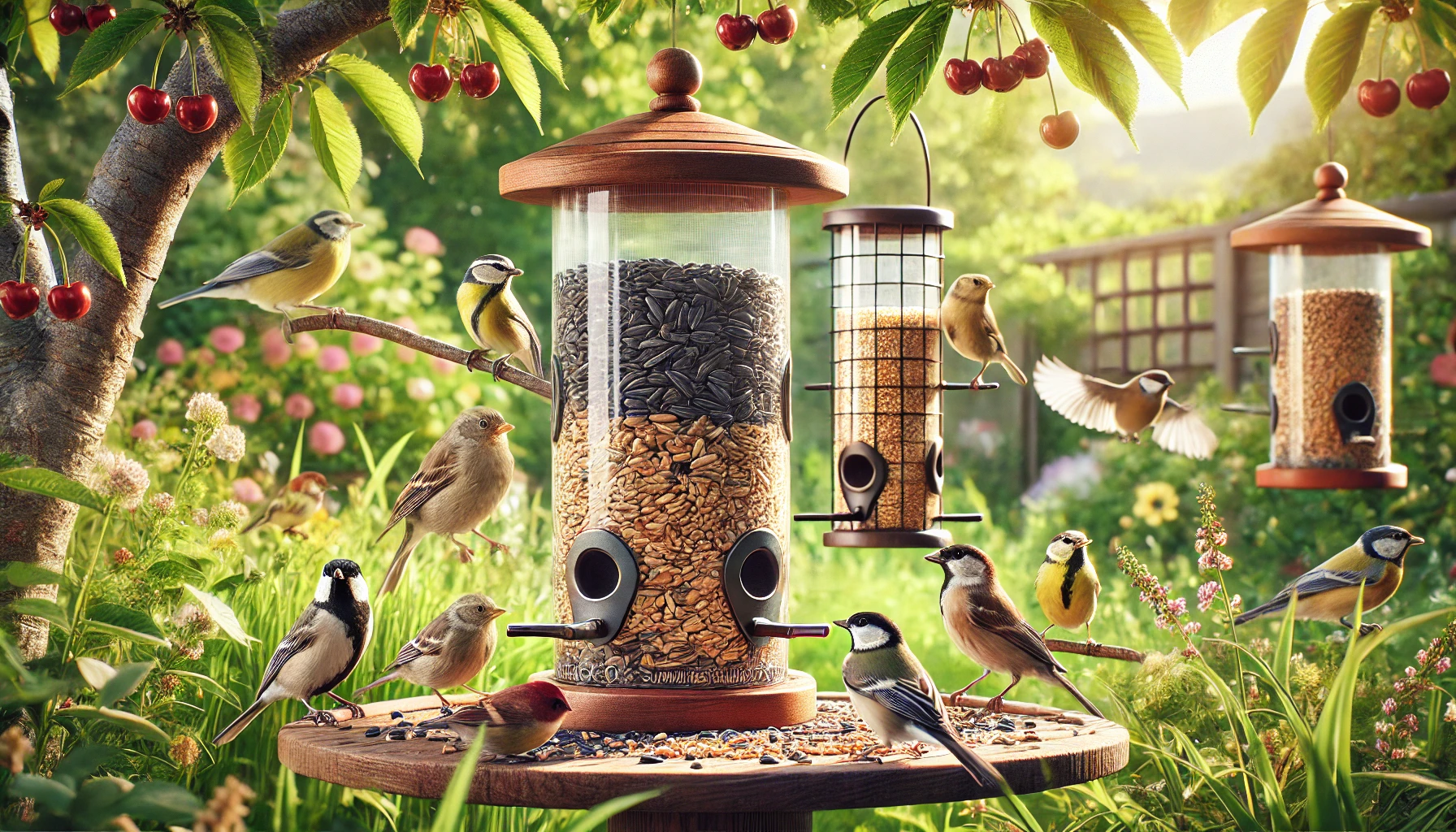
Provide a Water Source
Birds often peck at fruit for moisture. A small birdbath or water dish can quench their thirst and reduce crop damage.
Install Nesting Boxes
Encourage birds to nest away from your crops by installing birdhouses or shelters at a distance. This creates a natural separation zone.
Leave a “Wild” Patch
Dedicate a small area to grow wild grasses and flowers. It becomes a haven for birds to feed and perch—keeping them busy and off your plants.
Rotate Distractions
Switch up feeders, plants, and water spots every few weeks. Birds are smart—changing the setup keeps them curious and occupied.
By giving birds safe and appealing alternatives, you protect your garden while helping local wildlife thrive.
When to Implement These Solutions: Timing Matters
Timing can make or break your success when applying solutions to plant problems . Here’s how to get it right:
1. Early Signs = Early Action
As soon as you notice symptoms—yellowing leaves, drooping stems, or brown spots—act fast. The sooner you respond, the better the outcome.
2. Morning is Best
Apply solutions like watering, pruning, or spraying treatments in the early morning. This allows the plant to absorb moisture and recover during the day .
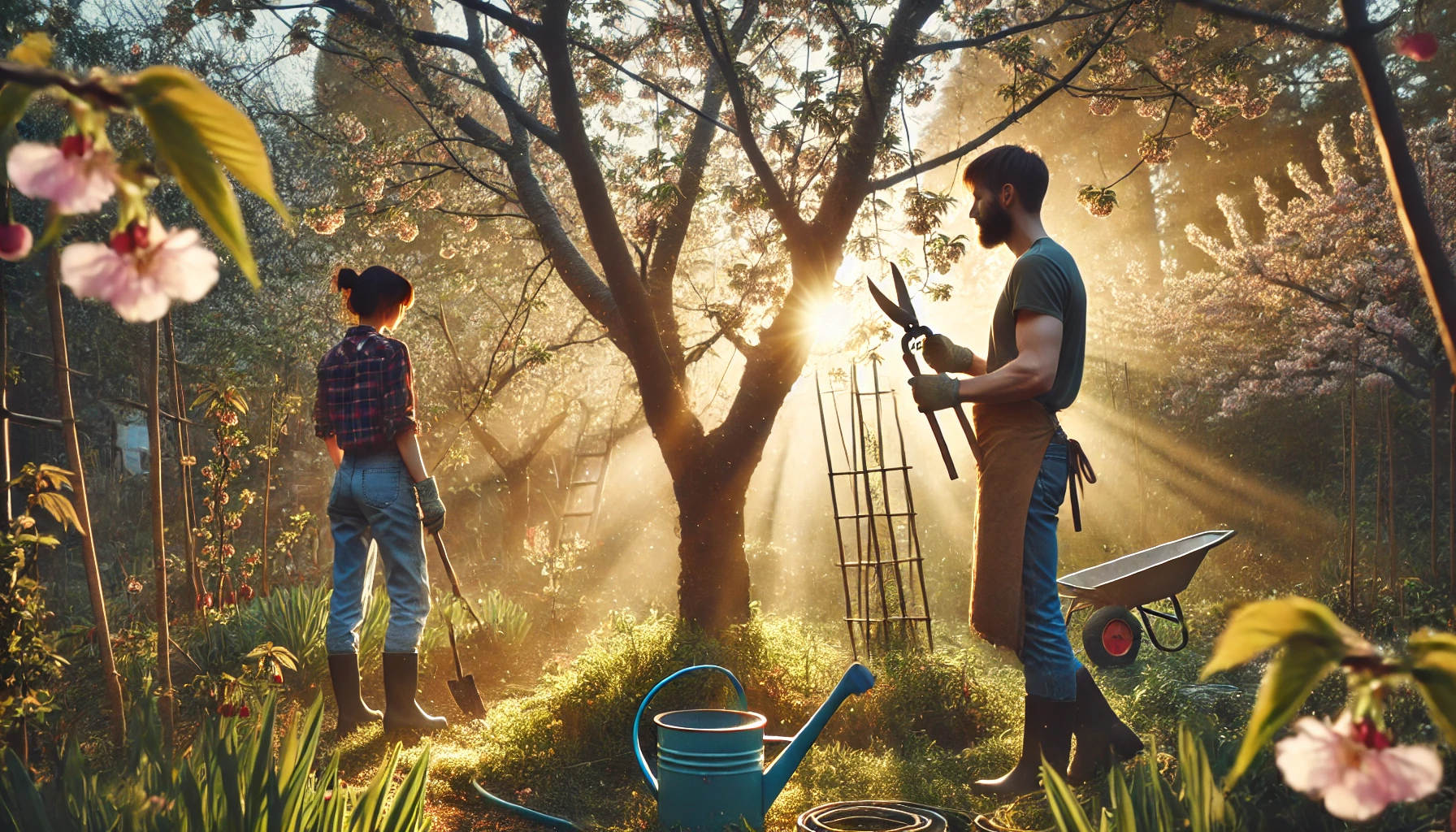
3. Seasonal Considerations
- Spring: Ideal for planting, fertilizing, and major interventions.
- Summer: Best for light maintenance and pest monitoring .
- Fall: Time to prune, mulch, and prepare for dormancy.
- Winter: Hold off—plants are mostly dormant .
4. After Rain or Watering
Treat soil issues or fertilize when the soil is moist—not dry or overly soggy. This helps nutrients reach the roots more effectively.
5. Consistency Matters
Stick to a regular care routine—weekly checks help catch issues before they escalate. Set reminders if needed .
By acting at the right time, your efforts are more effective, your plants are happier , and your garden thrives. Want to dive into timing for a specific plant?
Additional Tips for a Healthy Cherry Tree
Want your cherry tree to stay strong and fruitful year after year? Here are some expert-backed tips to keep it thriving!
1. Sunlight Is Key
Cherry trees love full sun! Ensure your tree gets at least 6–8 hours of direct sunlight daily for healthy growth and juicy fruit.
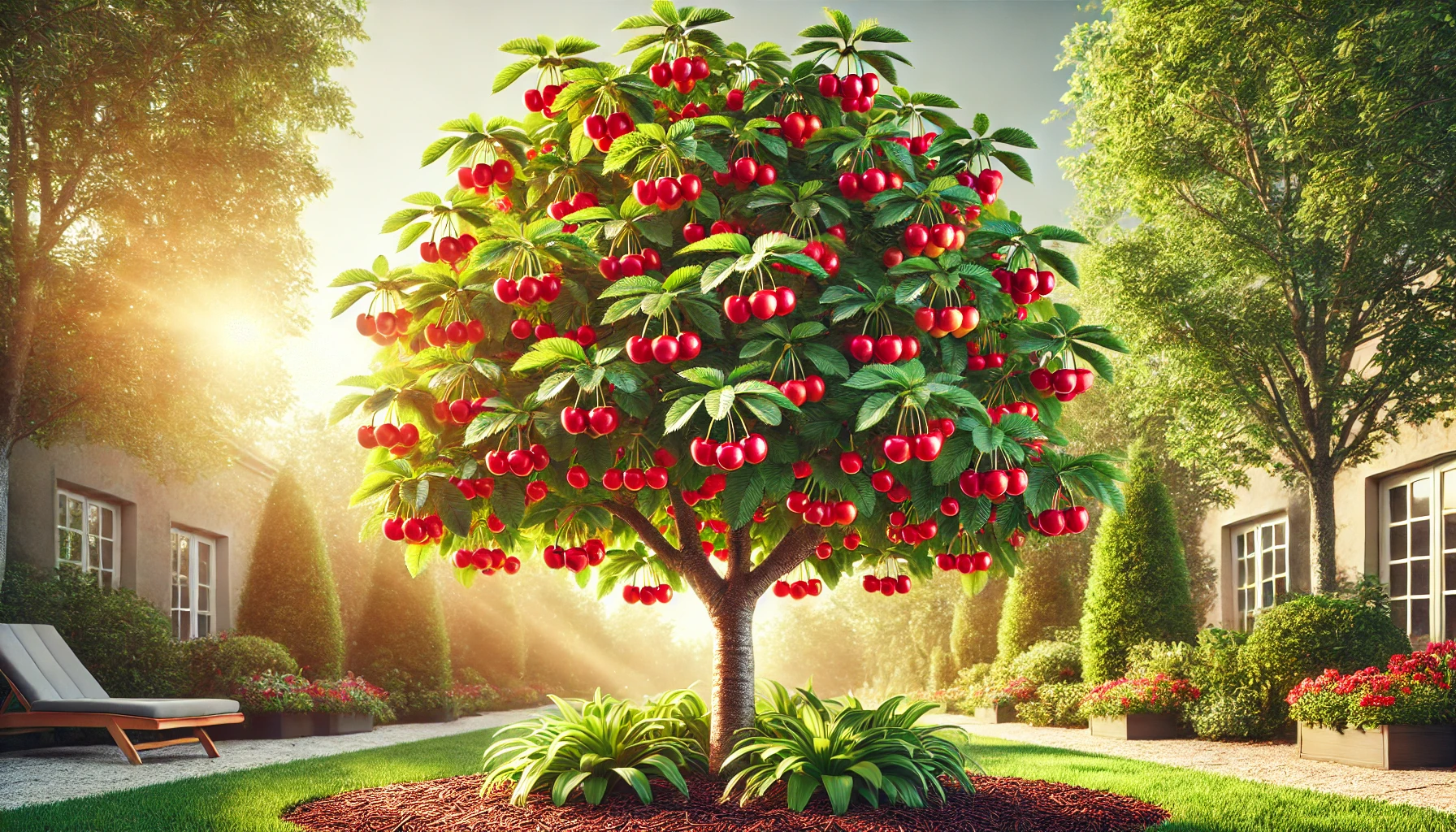
2. Water Deeply, Not Frequently
Water thoroughly but less often. Aim to keep the soil consistently moist—not soggy—to prevent root rot.
3. Mulch for Moisture and Weed Control
Apply a 2–4 inch layer of organic mulch (like wood chips) around the base, but not touching the trunk. This retains moisture, keeps roots cool, and blocks weeds.
4. Prune Regularly
Prune in late winter to early spring to remove dead or crossing branches and improve airflow. Good airflow = fewer diseases!
5. Test Your Soil
Healthy cherry trees prefer slightly acidic to neutral soil (pH 6.0–7.0). Use a soil test kit and amend as needed with compost or sulfur.
6. Attract Beneficial Insects
Plant pollinator-friendly flowers nearby (like lavender or marigolds) to boost fruit production and support your local ecosystem.
7. Monitor for Pests and Diseases
Watch out for aphids, borers, and fungal issues. Use neem oil or insecticidal soap early and often if needed. Prevention is easier than cure!
8. Protect Young Trees
Use tree guards or fencing to protect young trees from deer or rodents, especially during winter.
With these easy yet effective tips, your cherry tree will reward you with lush blooms and sweet harvests season after season!
Conclusion
Caring for your cherry tree doesn’t mean choosing between a healthy harvest and being kind to nature. By learning how to keep birds away from your cherry tree without harm, you ensure a sweet, fruitful season while respecting the wildlife that shares your garden space. From reflective deterrents and bird netting to natural repellents and smart decoys, each method offers a humane way to protect your tree.
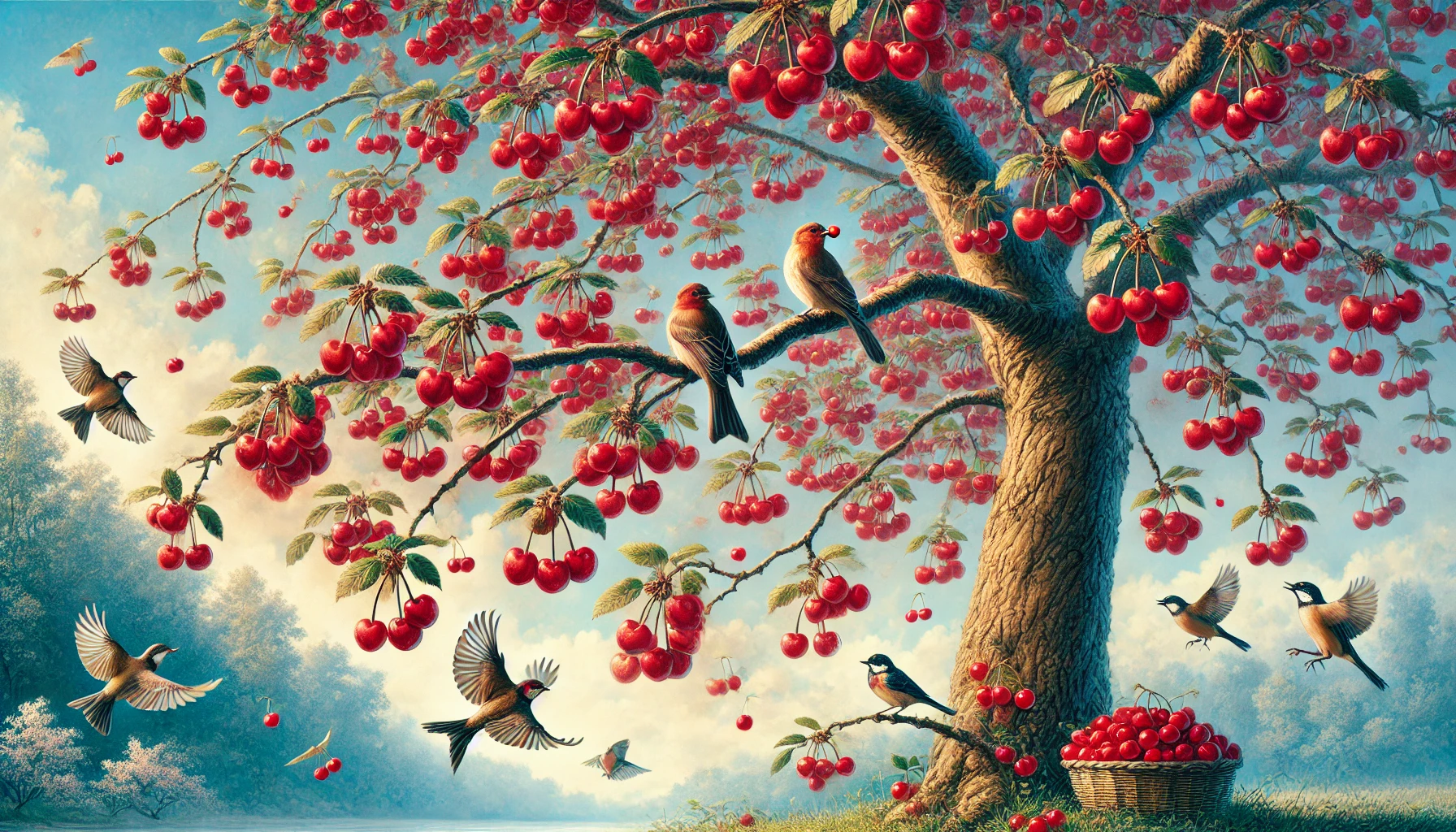
Start implementing these safe and effective techniques early, stay consistent, and soon you’ll enjoy a thriving cherry tree with plenty of delicious fruit — no harm done.
Would you like a matching FAQ or meta description for this article as well?
Frequently Asked Questions(FAQ)
What are the best methods for how to keep birds away from your cherry tree without harm?
The best humane methods include bird netting, reflective tape, noise deterrents, decoy predators like owls, and planting distraction crops nearby. These techniques discourage birds without hurting them.
Is bird netting safe for birds and effective?
Yes, bird netting is both safe and effective when installed properly. Make sure it’s tightly secured so birds don’t get tangled and use fine mesh to prevent access.
Can natural repellents really work to keep birds away?
Yes, natural repellents like garlic oil, chili spray, or essential oil blends can deter birds when applied regularly. They work by creating an unpleasant scent or taste without harming the tree or birds.
Are scare tactics like reflective objects and noise deterrents humane?
Absolutely! Reflective objects (CDs, foil tape) and motion-activated noise devices are non-lethal and simply startle birds away without injury, making them safe deterrents.
When is the best time to apply bird deterrents?
The earlier, the better. Apply deterrents just before the cherries ripen, so birds don’t get used to feeding there. Consistency is key for success.
Will these methods disturb beneficial wildlife or pollinators?
Most humane bird deterrents have minimal impact on beneficial insects or pollinators, especially when used mindfully and only during fruiting season.
